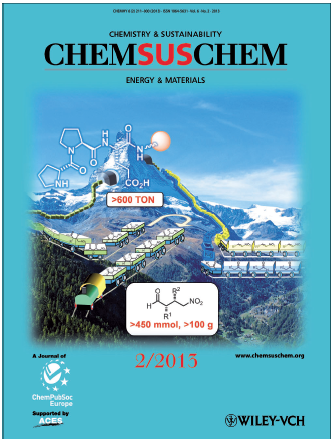Invited for this month’s cover is the group of Helma W ennemers at the ETH Zürich. The image shows an immobilized peptidic catalyst that allows for asymmetric enamine catalysis in continuous flow.
ennemers at the ETH Zürich. The image shows an immobilized peptidic catalyst that allows for asymmetric enamine catalysis in continuous flow.
Read the full text of the article at 10.1002/cssc.201200740
What are the main challenges in the broad area of your research ?
Organocatalysis provides attractive tools for the stereoselective synthesis of a broad range of synthetically valuable com- pounds. From a practical standpoint, major challenges are the necessity of typically high catalyst loadings and the poor reus- ability of the catalysts, which limit the use of organocatalysts on a large scale.
What is the most significant result of this study?
This is the first example of highly stereo- and chemoselective enamine catalysis in a continuous flow reactor on a scale of >100g (>450mmol). The turnover numbers (TONs) of the peptidic catalyst are the highest yet achieved in enamine catal- ysis and open the door to practical applications.
Who contributed to the idea behind the cover?
The cover was designed by Yukihiro Arakawa who got the first inspiration for the design from his little son Mizuyuki who likes to play with a toy train very much.
What other topics are you working on at the moment?
Our research group is engaged in developing small molecules for functions that are fulfilled in nature by large macromole- cules. This involves the development of asymmetric catalysts, bioinspired materials, cell penetrating compounds, and tem- plates for the controlled formation of metal nanoparticles.
Cover Profile Article in ChemSusChem 2013, 6, 212
(c) 2013 Wiley-VCH Verlag GmbH& Co. KGaA, Weinheim
David Spichiger, SCS
14.06.2013

